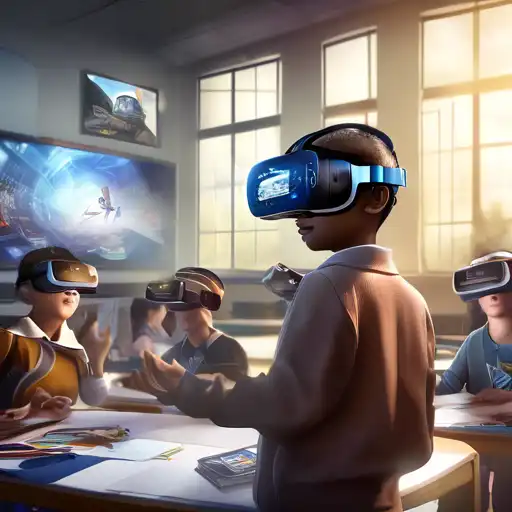Introduction to Virtual Reality in Education
Virtual Reality (VR) is revolutionizing the educational landscape, offering immersive learning experiences that were once unimaginable. This technology transports students to virtual environments where they can interact with 3D objects, explore historical sites, or even conduct scientific experiments in a safe and controlled setting. The potential of VR in education is vast, paving the way for a new era of interactive and engaging learning.
The Benefits of VR in Learning
VR in education offers numerous benefits, including enhanced engagement, improved retention rates, and the ability to simulate real-world scenarios. Students can explore complex concepts in a hands-on manner, making learning more intuitive and effective. For instance, medical students can practice surgeries in VR, reducing risks and improving their skills before performing actual procedures.
Engagement and Motivation
One of the key advantages of VR is its ability to captivate students' attention. Traditional learning methods often struggle to maintain engagement, but VR's immersive nature ensures that students are fully absorbed in their learning environment. This heightened engagement leads to better motivation and, consequently, improved learning outcomes.
Accessibility and Inclusivity
VR also democratizes education by making learning accessible to students regardless of their physical location or limitations. Virtual field trips, for example, allow students from all over the world to visit museums, historical landmarks, and even outer space without leaving their classrooms.
Implementing VR in Educational Settings
Integrating VR into education requires careful planning and consideration. Schools and institutions must invest in the necessary hardware and software, as well as train educators to effectively incorporate VR into their curricula. Despite these challenges, the long-term benefits of VR in education make it a worthwhile investment.
Choosing the Right VR Content
Selecting appropriate VR content is crucial for maximizing its educational value. Content should be aligned with learning objectives and tailored to the students' age and comprehension levels. There are numerous VR educational platforms available, offering a wide range of subjects from science and history to art and literature.
Challenges and Considerations
While VR offers exciting possibilities, there are challenges to consider, such as the cost of equipment, the need for technical support, and potential health concerns like motion sickness. Addressing these issues is essential for the successful adoption of VR in educational settings.
Future Prospects
The future of VR in education is bright, with advancements in technology making it more accessible and effective. As VR becomes more mainstream, we can expect to see even more innovative applications that will further transform the way we learn and teach.
For more insights into innovative learning technologies, explore our EdTech Trends section.
Conclusion
Virtual Reality is setting the stage for a transformative shift in education. By offering immersive, interactive, and inclusive learning experiences, VR has the potential to enhance educational outcomes and prepare students for the challenges of the future. As we continue to explore and expand the possibilities of VR in education, we are indeed entering a new era of learning.
